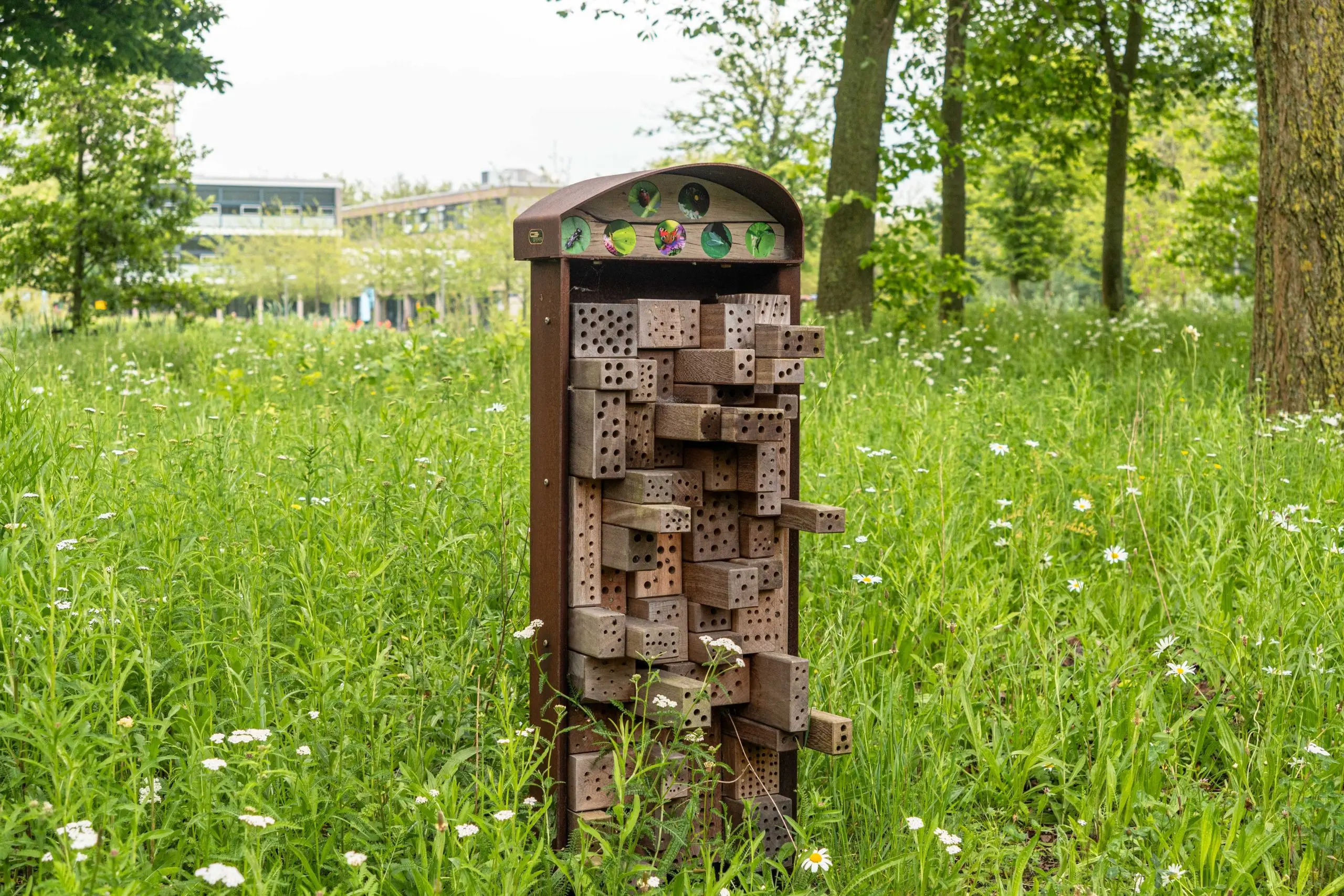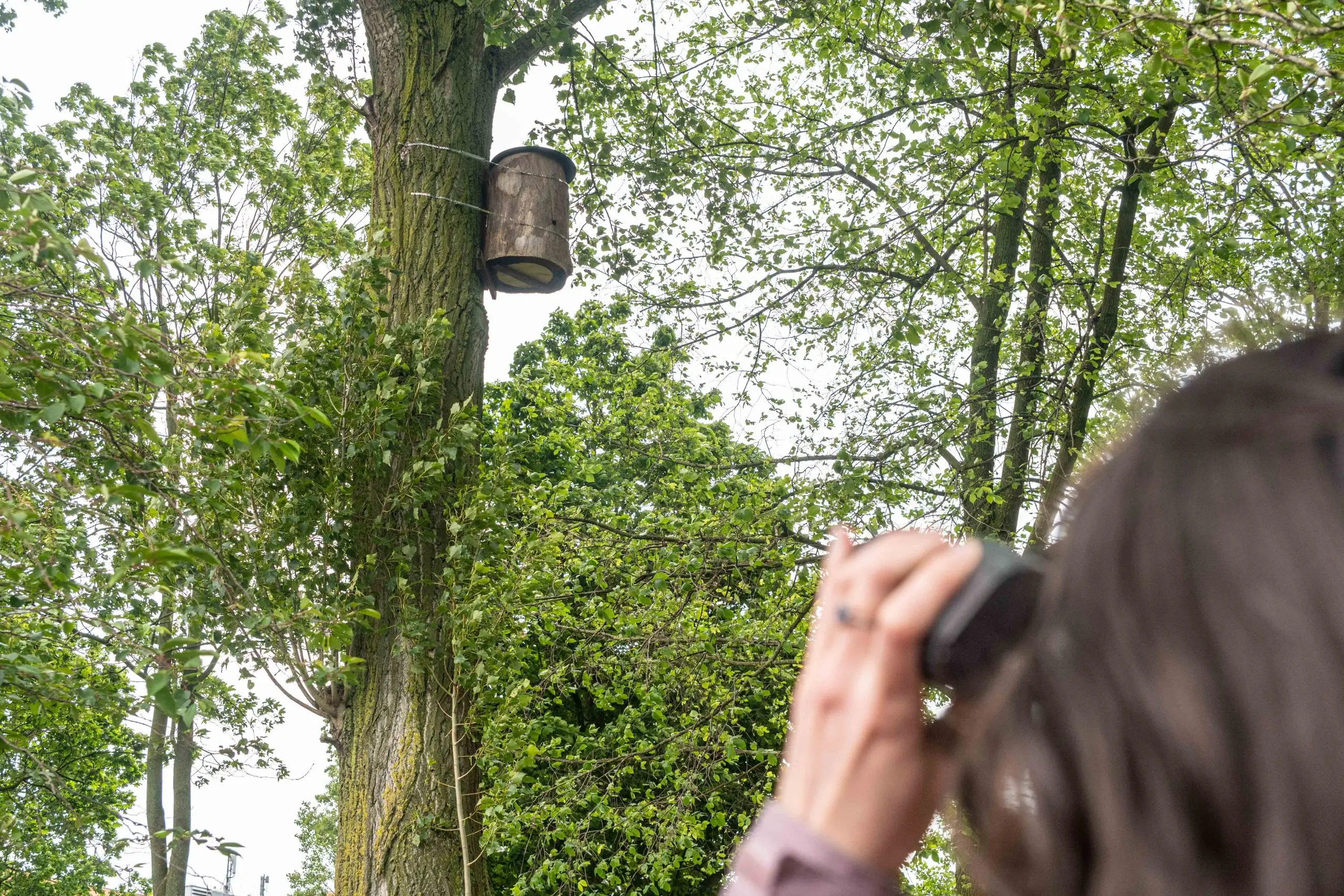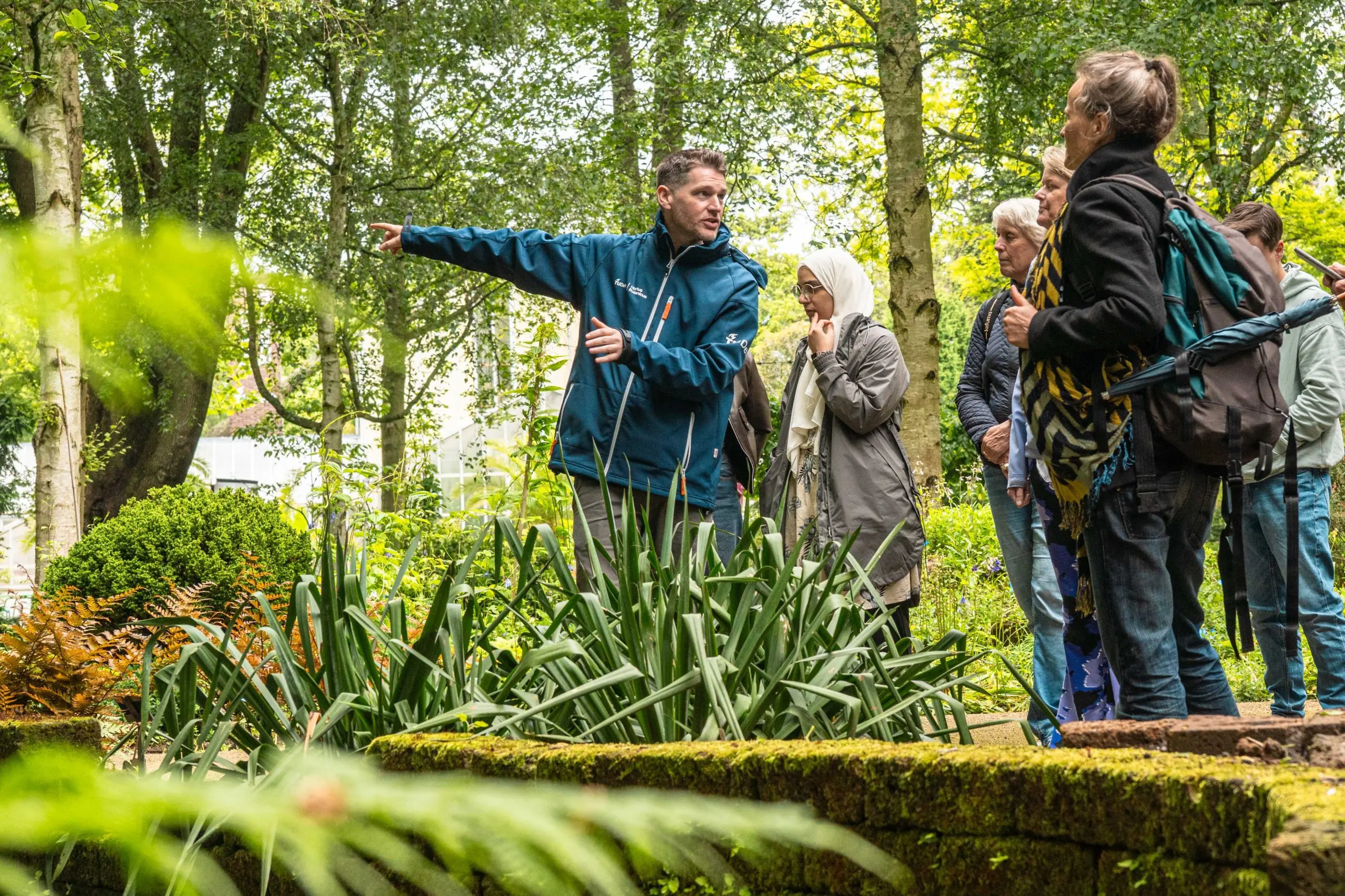Knotweed, yarrow and narrow leaf plantain. Until recently, you did not come across these on campus. Green managers now leave them be(e) in order to attract insects. But on the chilly, wet and windy Biodiversity Day, bees and bugs were hiding.
Bee visits flower on campus (Foto: Thijs van Reeuwijk)
The TU Delft Sustainability Project seized the National Biodiversity Day on Wednesday, 22 May 2024 to run a series of walks across campus and through the Hortus Botanicus.

Green manager René Hoonhout, who has been with TU Delft for 34 years, remembers that when he was appointed, nature was pretty much absent from the campus. In the 1990s, the buildings were surrounded by car parks, and Shell’s centrally located petrol station was at the foot of the EEMCS tower.
The turnaround started with the grass roof of the TU Delft Library, says Hoonhout. Students discovered how nice it was to lie on the grass roof in summer or have some lunch. That was 25 years ago last year. After the success of the University Library, the architecture firm Mecanoo was also commissioned to design a master plan for the campus as well. As a consequence, car parks had to make way for the grass and walking paths in the Mekelpark. This was completed in 2013.
“The Mekelpark was a combination of paved paths, trees and grass mown short,” Hoonhout explains. “And we would have immediately removed an elderberry bush, like the one you now see at the edge of the water.” It has only been the trend over recent years for green management to become more ‘nature inclusive’. Specifically, this means mowing less and allowing more and more diverse growth. Green management also involves actively spreading seed mixtures to get more flowers on campus.

Bee tour
In addition, areas have been set up to attract bees. This is what the bee tour today is showing us. In a corner of the south side of the Applied Physics building, Hoonhout shows a bee barrow. Various species of flowers are blooming on the sand mound, as elsewhere. But the side is open sand, facing the usually sunny south. Inlaid tiles protect the tunnels of ground bees from the rain. After some searching, the greenkeeper finds some holes, but it is not yet busy. Because it’s too cold.
During the walk Hoonhout explains that everything will be inventoried, but it has as yet to be done. So it is not yet possible to say whether and to what extent the greening of the campus is benefiting the bee population.

A little further on, to the south of the Civil Engineering and Geosciences building, a huge wooden barrel hangs high in a tree. It could house a population of honey bees. According to one of the participants of the walk, there has been increased bee activity around the hive in recent days. That bodes well for habitation in summer.
Incidentally, not everything is peaceful between different bee colonies. There is competition over food and newly introduced honey bees may displace indigenous ground bees (wild bees that live in burrows in the ground) in the process. “Beehives have a positive ecological image, but that is by no means always justified,” Hoonhout says. He distinguishes between honey bees that are productive and wild bees that are more important for pollinating flowers and plants.

At the TU Delft The Green Village field lab, Bee Grateful‘s bee hotels are mounted on lampposts. Founders Florence and Zoe designed these to make the urban environment more attractive to wild bees, more than half of which are threatened with extinction. The Green Village optimises the hives in terms of material, hole size and orientation.

Tipping point
Surely the most biodiverse patch in the wider area is the Hortus Botanicus, the botanic garden, claims Director and Curator James Byng. Two thousand new plants are discovered every year, while at the same time more and more species are becoming extinct. “We are at a ‘tipping point’,” says the Scottish botanist. “We are documenting and describing species, and at the same time we are also trying to protect them.” Botanic gardens have an important role in this, says Byng. They contain trees that are already extinct in the wild such as the medicinal Ginkgo Biloba. If they ever return to nature, it will be thanks to gardens like these.
Biodiversity is ‘cool’ now, observes Byng. But its importance, he says, goes much further. “Humans depend on biodiversity for food, medicine and building materials. We therefore need to document, preserve and use it. With the increasing global population and growing demands on ecosystems, the current generation may be the last that will be able to make a significant impact. They may still increase biodiversity and reverse mass extinction.”
- The biodiversity walk is an initiative of the TU Delft Sustainability Project Team
- Now is an excellent time to visit the TU Delft Hortus Botanicus

Do you have a question or comment about this article?
j.w.wassink@tudelft.nl


Comments are closed.